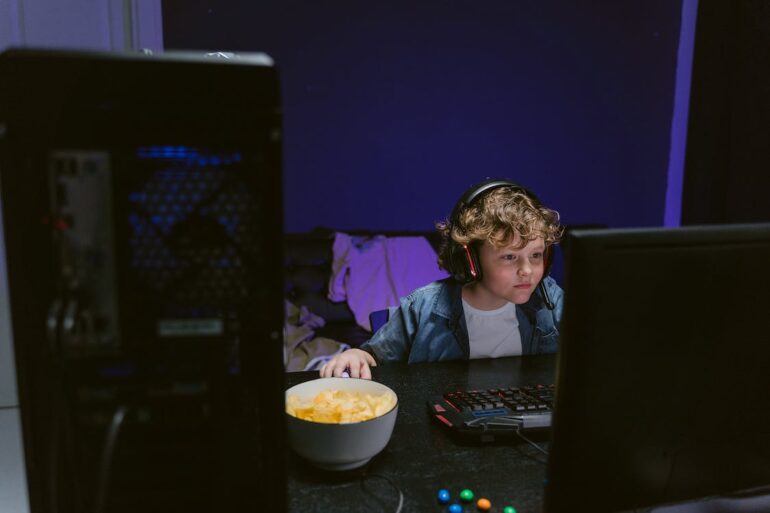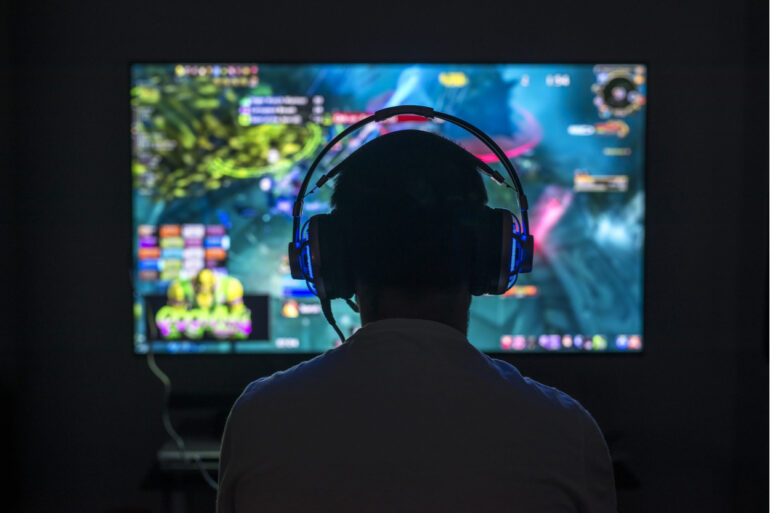In a culture seduced by the appeal of games and digital entertainment, a recurring concern lingers: Do games inhibit excellent learning? It’s a dispute that piques people’s interest, raises eyebrows, and calls conventional thinking into question.
How much progress can be made in a future where education is not limited to traditional techniques but is entwined with the excitement of gaming? A world in which you can buy essay papers and supplement the knowledge by simulating this information to obtain a better understanding?
Join us as we investigate the intricacies, debunk falsehoods, and delve into the emotional world of gaming and learning. From the enticing attraction of virtual worlds to the untapped potential of gamified education, it’s time to debunk the myth that games impede learning and unleash the revolutionary force that lies within.
Harnessing the Power of Games for Learning

Engagement and Motivation: Fueling the Learning Fire
Games have an intrinsic potential to attract and inspire students, kindling their desire to take an active role in their educational experience. They provide rapid feedback, prizes, and a sense of accomplishment, which enhances motivation and encourages students to persevere in their academic pursuits.
Active Learning: Putting Knowledge into Action
Games encourage active learning by allowing users to interact with the content, make decisions, and solve problems. As players actively explore and control the game world, they develop a deeper comprehension of topics and critical thinking skills.
Experiential Learning: Bridging the Gap to Real-World Scenarios
Games provide learners with invaluable chances for experiential learning by simulating real-life scenarios in virtual spaces. Players can apply their knowledge and abilities in practical scenarios by immersing themselves in these digital experiences, cementing their understanding and aiding real-world application.
Feedback and Progress Tracking: A Journey of Improvement
Games provide learners with quick feedback, helping them to identify errors and make appropriate modifications. Furthermore, progress monitoring capabilities allow learners to measure their progress, establish objectives, and see how they grow over time, encouraging a sense of accomplishment and self-awareness.
Personalization and Adaptation: Tailoring Education to Individual Needs
Certain instructional games use adaptive learning approaches, customizing information and challenges to each learner’s specific needs and ability levels. This individualized method guarantees that learners are suitably challenged and that they can develop at their speed, ultimately improving their learning results.
Contextualized Learning: Unleashing the Power of Relevance
Games add context and significance to learning knowledge, making it more meaningful and memorable. Learners receive a real understanding of how to apply their newly gained knowledge by seamlessly incorporating educational themes into the game’s narrative or gameplay mechanics.
Exploration and Curiosity: Unveiling the Wonders of Discovery
Gaming actively fosters exploration and curiosity, allowing players to learn new things, find hidden objects, and progress through levels. This fostered a sense of curiosity within games that can drive learners to seek knowledge and embark on an exploratory adventure that extends beyond the limitations of the game itself.
The Pitfalls of Games: When Learning Takes a Backseat

Excessive Time Consumption: Balancing Priorities for Success
Excessive gaming time might interfere with academic or professional commitments, resulting in a decrease in productivity or a lack of focus on critical activities. Maintaining a healthy balance between gaming and other obligations is critical for academic success and overall productivity.
Lack of Educational Value: Selecting Games with Purpose
Not all games are explicitly educational. Some games are primarily for enjoyment, stressing characteristics such as violence, improper content, or addictive gameplay mechanisms, which interfere with the learning process.
It is critical to select high-quality educational games that correspond to intended learning results to rip the most benefits from gaming.
Superficial Learning: Unlocking the Depths of Knowledge
In certain circumstances, games may simply promote surface-level learning, favoring rote memory or fundamental skills over deeper comprehension and critical thinking. Games may have a limited impact on meaningful educational results if they lack clear learning objectives or fail to sufficiently challenge learners.
Always prefer games that help the reader to understand how to apply game-based information and abilities in real-world circumstances.
Limited Transferability: Bridging the Gap to Real-Life Applications
Games that teach specialized skills or knowledge in their setting may not always aid in their transferability to real-world circumstances.
Learners must bridge the gap between game-based learning and practical application by understanding how the knowledge and abilities obtained in the game may be effectively applied outside of the gaming environment.
Negative Impact on Health: Striving for Balance and Well-being
Prolonged gaming sessions might be harmful to one’s physical and mental health. Excessive sedentary activity, insufficient sleep, and increased screen time can lead to health problems such as obesity, sleep difficulties, and lower overall well-being, all of which can impede the learning process and academic achievement.
Maximizing the Benefits: Incorporating Games into Education

Define Learning Objectives: Setting the Course for Success
Specify the particular learning goals or abilities that can be enhanced through the use of games. Determine how they may best support and complement intended outcomes for learning, consequently establishing a clear link between gaming and curricular objectives.
Choose High-Quality Educational Games: Unlocking the Learning Potential
Choose games that are specifically intended for educational purposes and that correspond to your learning objectives. Search for games with interesting gameplay, appropriate material, and good learning techniques. Consult credible sources for recommendations and full reviews to guarantee quality and educational value.
Integrate Games into the Curriculum: Blending the Virtual and the Real
Incorporate games as a supplement to your curriculum, recognizing appropriate moments to seamlessly combine them with the themes being addressed. Ensure that games complement the curriculum and enrich the entire learning process, giving students a well-rounded educational experience.
Provide Guidance and Context: Illuminating the Path of Learning
Provide clear instructions and the required context for the game to learners. Describe how the game relates to the learning objectives and how it may be used in real-world situations.
By assisting learners in making connections between the game and educational concepts, you enable them to fully appreciate the educational benefits of the gaming experience.
Balance Gaming and Other Activities: Fostering Well-rounded Development
Establish explicit boundaries and time limitations for gaming activities to emphasize the necessity of balance. Encourage kids to participate in a variety of activities, such as non-screen-based learning, physical activity, social interactions, and other hobbies.
Final Take

As education moves beyond traditional techniques, incorporating the excitement of gaming offers enormous possibilities for advancement. By leveraging the potential of games for learning, we can increase engagement, stimulate active learning, bridge the gap to real-world settings, provide feedback, customize education, contextualize learning, and drive inquiry.
We can optimize the advantages of using games in education by choosing high-quality educational games, including games in the curriculum, offering direction and context, and encouraging a balanced approach.
Together, let us embrace the transforming power of games and pave the road for effective and interesting learning experiences.
